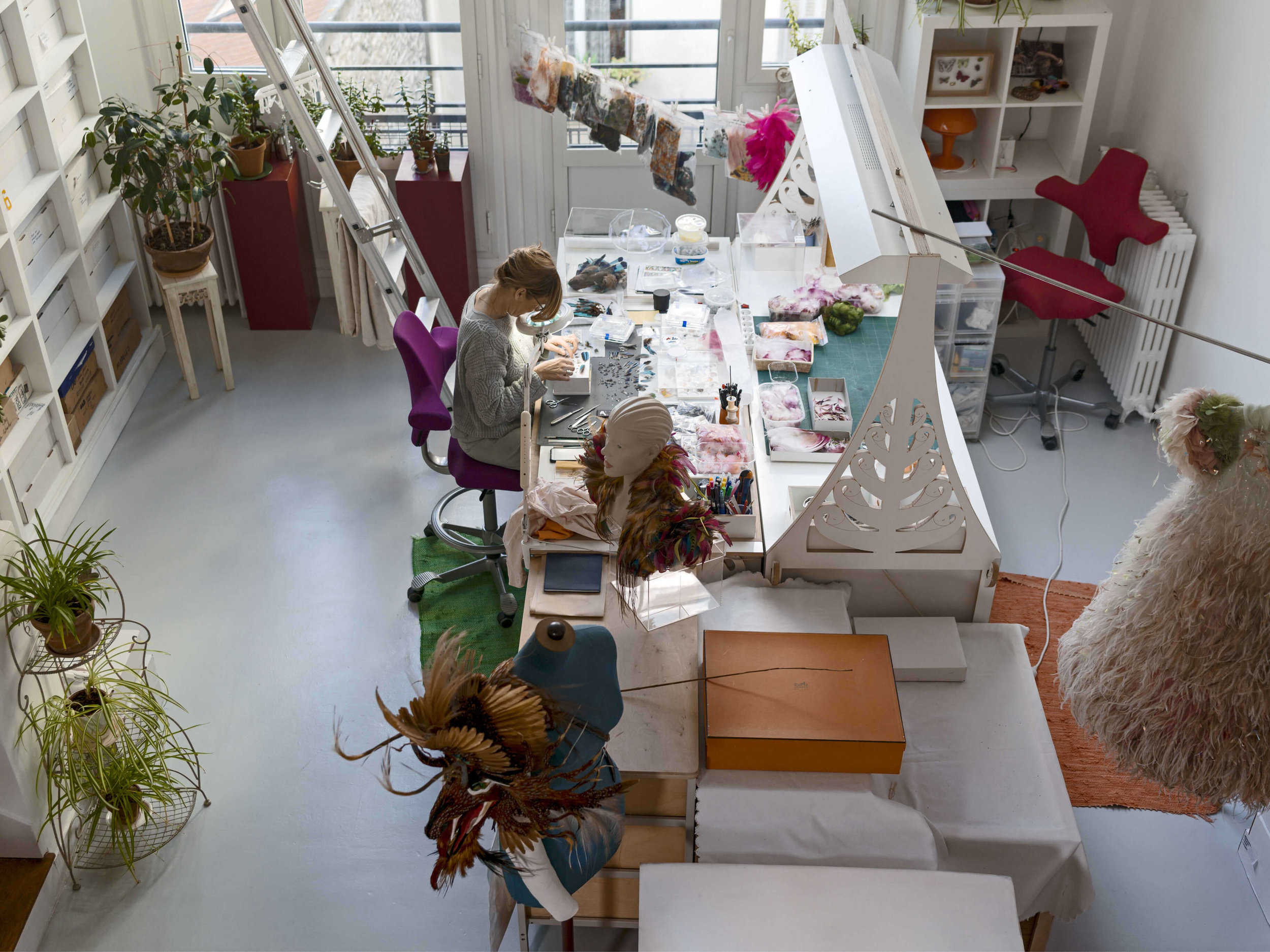In the Atelier with Nelly Saunier, Plumassiere de Reves
@Philippe Chancel
When you’ve reached the top of your craft it can sometimes be hard to stay motivated, especially with the more routine work. That’s the challenge with Nelly Saunier, one of the world’s best plumassières, or ‘feather artist’.
“In 30 years, the scope of my work has completely changed; from Haute Couture to High Jewellery, I am constantly exploring new territories, new techniques that allow me to create unique pieces. It is essential for me not to repeat myself, to innovate, in order to always surprise the public,” confides the Parisian and master plumassière. “I need to surprise myself as well, in order to stimulate my creative process.”
Saunier is considered one of the top feather artists in the world, courted by luxury brands like Harry Winston, Van Cleef & Arpels, and Piaget to create unique statement pieces that will captivate their increasingly discerning and demanding clientele.
Her latest challenge? She has to find a way to add a 24-carat gold leaf to feathers for a Piaget gold cuff.
“Piaget had given me a general brief, ‘white snow,’ and selected one of the drawings I had done for a previous project for them. Beyond this, I had carte blanche, as always with them. I had chosen two types of white feathers, pelican and goose for their different thickness that would provide a slight relief effect. But I also wanted to add some brilliance to create more visual impact and echo the gold work of the cuff,” she says.
“I’d never used gold leaf before and I had to learn quickly with a master craftsman. Feather is already light, but the gold leave is really micron (thickness).”
Saunier created all her instruments to work on the project, including the little leather cushion on which to cut the gold leaf. “First you have to pick it up gently, it’s very volatile. You lay it over the cushion, it’s all wrinkled and you have to blow on it in the middle to flatten it out.”
“Then you cut small pieces, pick them up making sure they don’t fly away and then finally put it on the final surface, the feather, which has been specially treated with a specific product to make sure it sticks. Then you gently push it down with a brush and if it flies away… well, you just have to redo the whole thing,” she explains.
Saunier points out that using feathers to the best of their potential requires a profound knowledge of birds and of course, a good eye for colour: “I would compare it to the work of the painter, with a big palette in front of me, on which there are all the feathers, all the colours. I have to search for the ideal feather, the one most adapted to the project, that will fit best on the support that has been chosen. The surface can change the final effect depending on the transparency of the feather—a white feather on a dark background can look grey,” she says.
© Johann Sauty
Custodian of an ancient skill, the only feather artist to be named Maître d’Art by the French Culture Ministry and winner of the “Liliane Bettencourt Prize for the Intelligence of the Hand,” Saunier’s work is widely celebrated today, but it has taken her 30 years of hard work to get here.
While feather accessories were made fashionable by Marie-Antoinette and reached its apex with nearly 500 ateliers in Paris in the 1920s, by the time Saunier learned her trade, plumassières were considered a ‘has-been’ craft, something only really associated with cabaret shows. At the time, there were only a handful of ateliers left in Paris.
After teaching her craft for 26 years, a chance encounter with Jean Paul Gaultier launched the feather artist’s career. Since then she has collaborated with Haute Couture houses such as Chanel, Givenchy, and Louboutin. She has also worked with renowned designers, created costumes for the cinema – and most recently, created infinitely delicate pieces for several high jewellery houses.
“There are so many extraordinary bird species, such a variety of colours, the possibilities are endless. Feather artistry is gaining new interest and finding new applications in design, jewellery, fashion and art. It is taking flight again,” she smiles.
This story was first published on Keyyes.com (August 2018)




